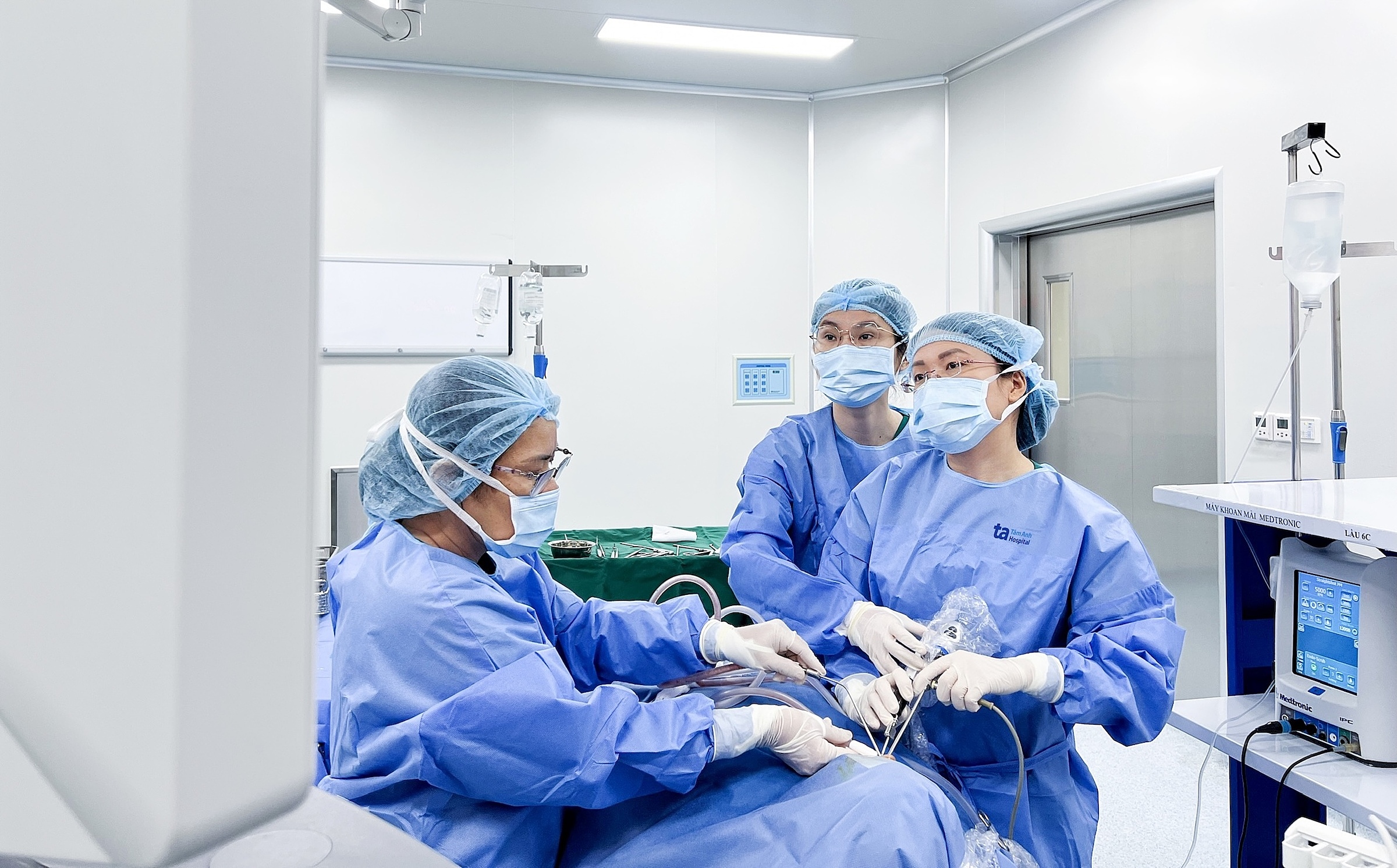An endoscopic examination of Lam's ear, nose, and throat at Tam Anh General Hospital in Ho Chi Minh City revealed swollen nasal and sinus mucosa, secretions in the middle meatus, and enlarged middle turbinates. A CT scan showed complete opacification of the left maxillary sinus with sclerosis of the left maxillary sinus wall, suspected fungal sinusitis, left ostiomeatal complex obstruction, aerated middle turbinates on both sides, and calcification of the internal carotid arteries in the cavernous sinus segment.
Dr. Tran Thi Thuy Hang, Head of the Department of Otolaryngology, diagnosed Lam with mucopurulent rhinosinusitis and bilateral middle turbinate hypertrophy, and recommended endoscopic sinus surgery to remove the fungal mass.
Dr. Hang performed surgery to correct the patient's middle turbinates, then widened the left maxillary sinus opening to remove the approximately 4 cm brown-black, bean-like fungal mass, and cleaned the thick pus and inflamed tissue. The pathology report indicated that the patient was infected with Aspergillus, a fungus commonly found in damp environments, soil, air, and house dust. Inhaling the fungus can lead to sinus infections.
Lam was discharged after two days and a follow-up appointment a week later showed improvement in her nasal congestion and runny nose.
 |
Dr. Hang (right) performing endoscopic sinus surgery on Lam. Photo: *Tam Anh General Hospital* |
A healthy person's immune system and sinus drainage system can prevent fungal invasion. However, in older adults with underlying conditions like hypertension, dyslipidemia, and hypothyroidism, such as Lam, a weakened immune system allows fungi to easily enter, accumulate, and form masses in the sinuses.
There are two types of fungal sinusitis: invasive and non-invasive. According to Dr. Hang, Lam had the non-invasive form.
Fungal sinusitis is often difficult to detect early because its symptoms, such as nasal congestion, runny nose, facial pain, and persistent cough, are easily mistaken for common sinusitis. Elderly patients or those with underlying conditions like diabetes, hypertension, or dyslipidemia should seek medical attention if they experience any unusual symptoms for accurate diagnosis and appropriate treatment.
Uyen Trinh
| Readers can submit questions about ear, nose, and throat conditions here for doctors to answer. |












